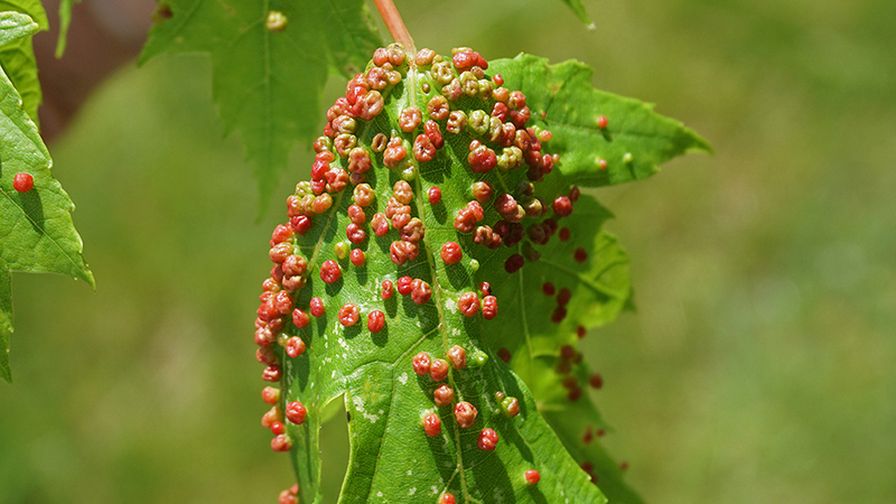Watch for Signs of Eriophyid Mites in Your Greenhouse

Photo: Joe Boggs, The Ohio State University
Eriophyid mites (family Eriophyidae) affect a wide variety of plants and are known as gall, blister, bud, or rust mites based on the abnormalities they cause in their host plants. Galls are abnormal growths on a plant that are often caused by plant hormones responding to irritation of cells due to insect, mite, or nematode feeding, or infection from fungi or bacteria.
Eriophyid mites live exclusively on plants and often develop and overwinter inside leaf and flower buds. These mites are known for causing a wide range of distortions such as flower and leaf galls as seen on coneflowers by the coneflower rosette mite and maple bladder galls caused by the mite Vasates quadripedes. While this damage is largely aesthetic, other eriophyid mites cause economic damage when not controlled. The tomato russet mite (Aculops lycopersici) causes discoloration of leaves and fruit in greenhouse tomatoes. Phyllocoptes fructiphilius transmits the Rose rosette virus to healthy rose plants causing life-long infection of plants with rose rosette disease. Each mite is specific to its host plant.
In a recent e-GRO alert, Beth Scheckelhoff of The Ohio State University outlines how eriophyid mites differ from other mite species, how to identify them, and management strategies. Learn more here.










